1 1/2 oz Averna
1/2 oz Pernod Absinthe
2 dash Fee's Whiskey Barrel Bitters
Stir with ice and strain into a rocks glass. Twist orange peel over the top and discard.

quality versus quantity does not have to be a winner-take-all proposition.



ModernistaWith changes in the base spirit, liqueur, citrus, and bitters as well as converting it into a tall drink, the Happy Fanny took on a rather new identity.
• 2 oz Scotch
• 1/2 oz Dark Jamaican Rum
• 1 tsp Absinthe
• 1/2 oz Swedish Punsch
• 1/2 oz Lemon Juice
• 2 dash Orange Bitters
Shake with ice and strain into a cocktail glass. Add a lemon twist.




 Every year for Tales of the Cocktail, Chuck Taggart of the Gumbo Pages blog posts an entry about where people should eat that year. Unfortunately for me, most of his restaurant suggestions do not seem that vegetarian friendly. When I started inquiring about options, I was met with a lot of "you're gonna go hungry, son" sort of comments; however, as we did a little research, I quickly realized that this was not going to be the case! After two days in at Tales last year, I decided that I would make this post especially after providing a vegan Boston bartender with a daily update of restaurant pointers replete with foodporn photos and copies of menus. Below is a summary of our outings listed in the order we went there. Note that some of the destinations are a distance from the Quarter, and these restaurants would not only be satisfying to someone seeking vegetarian/vegan dining but to anyone seeking a change of pace with some vegetables on their plate. At Tales, we walked everywhere (including out to the Cure through the Magnolia Projects, but that is another story and not recommended), but taxis and streetcars can assist the time strapped.
Every year for Tales of the Cocktail, Chuck Taggart of the Gumbo Pages blog posts an entry about where people should eat that year. Unfortunately for me, most of his restaurant suggestions do not seem that vegetarian friendly. When I started inquiring about options, I was met with a lot of "you're gonna go hungry, son" sort of comments; however, as we did a little research, I quickly realized that this was not going to be the case! After two days in at Tales last year, I decided that I would make this post especially after providing a vegan Boston bartender with a daily update of restaurant pointers replete with foodporn photos and copies of menus. Below is a summary of our outings listed in the order we went there. Note that some of the destinations are a distance from the Quarter, and these restaurants would not only be satisfying to someone seeking vegetarian/vegan dining but to anyone seeking a change of pace with some vegetables on their plate. At Tales, we walked everywhere (including out to the Cure through the Magnolia Projects, but that is another story and not recommended), but taxis and streetcars can assist the time strapped.






Ping Pong #2The Improved Ping Pong's nose contained both lemon oil and floral elements. The sip was full of sweet fruit notes with a slightly bitter and floral swallow. When I gave Andrea a sip, she commented that the raspberry notes (from a combination of the slow gin and Yvette) strangely reminded her of a popsicle.
• 1/3 oz Sloe Gin
• 1/3 oz Crème Yvette
• 1 spoon Lemon Juice
Shake with ice and strain into a cocktail glass.

Tahoe Cocktail / OlympiaThe Cherry Heering-heavy recipe reminded me a drink from Pioneers of Mixing at Elite Bars's liqueur section, the Pinto. Although unlike the Pinto which uses the Cherry Heering to balance the dominant Fernet Branca in the drink, here the cherry flavors are the dominant note. Indeed, the Bulldog was a sweet cherry with undertones of lime crispness and rum. When I gave Andrea a sip, she commented that it tasted "like cherry coffee... really weird" and how the rum and Heering combined to create this coffee note. Overall, I cannot decide which I enjoyed more -- the flavor of the Bulldog or the absurdity of the recipe.
• 1 1/2 oz Light Rum / Dark Rum
• 1/2 oz Cherry Liqueur
• 1/2 oz Lime Juice
Shake with ice and strain into a cocktail glass. Source: CocktailDB.


 Oxo Brand's newest addition to their barware line is a double jigger to supplement their 2 ounce Mini Angled Measuring Cup. Why might you care about yet another double jigger on the market? Well, theirs besides being a standard 1 1/2 x 1 ounce double jigger has demarcations on the inside for 1/4, 1/3, 1/2, and 3/4 ounces! Quite handy in that only one jigger is needed to do a wide spectrum of pours. Moreover, it contains the 1/3 and 3/4 ounce marks that their 2 ounce measuring cup sadly lacks. While 1/3 ounce does not seem very useful for most American recipes, the vast majority of European ones use milliliters or centiliters (mL or cL) instead of ounces, and the frequently called for 10 mL or 1 cL measure is pretty identical to 1/3 ounce. One criticism I heard from a local bartender is that he wished one of the ends was 2 ounces since they frequently use their standard 2 x 1 ounce jigger a lot at their bar. Priced at $9 at the Boston Shaker, it was worth purchasing to give it a try. If my review gets a little geeky, keep in mind that I'm a biochemist by day so volumes are very important to my work (and my play).
Oxo Brand's newest addition to their barware line is a double jigger to supplement their 2 ounce Mini Angled Measuring Cup. Why might you care about yet another double jigger on the market? Well, theirs besides being a standard 1 1/2 x 1 ounce double jigger has demarcations on the inside for 1/4, 1/3, 1/2, and 3/4 ounces! Quite handy in that only one jigger is needed to do a wide spectrum of pours. Moreover, it contains the 1/3 and 3/4 ounce marks that their 2 ounce measuring cup sadly lacks. While 1/3 ounce does not seem very useful for most American recipes, the vast majority of European ones use milliliters or centiliters (mL or cL) instead of ounces, and the frequently called for 10 mL or 1 cL measure is pretty identical to 1/3 ounce. One criticism I heard from a local bartender is that he wished one of the ends was 2 ounces since they frequently use their standard 2 x 1 ounce jigger a lot at their bar. Priced at $9 at the Boston Shaker, it was worth purchasing to give it a try. If my review gets a little geeky, keep in mind that I'm a biochemist by day so volumes are very important to my work (and my play). 
• OXO Double JiggerAll values are the average of a cumulative 12 pours (i.e.: I did not try to measure each individual pour). I did not test the 1 1/2 or 1 ounce lines as I was more interested in the accuracy of the demarcations inside (and I assumed that they were as accurate as any other quality jigger).
• plastic OXO Mini Angled Measuring Cup
• 1/2 x 1 ounce Double Jigger from Kegworks
• 1/2 x 1 ounce Double Jigger from BarSmarts (part of the kit for taking the class)
• 100 mL graduated cylinder
• 1 funnel
• Tap water (Somerville, MA's finest)

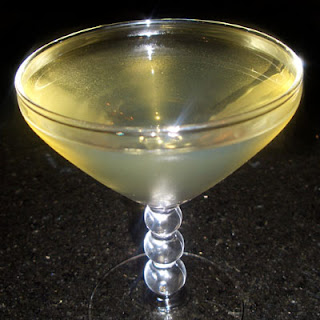

• 1 1/2 oz Dark RumDevin turned his search into an interesting series of blog posts, and the Periodista might be to Devin as the holy Pegu Club is to Doug. His research into this "seductive cousin of the Daiquiri" is definitely worth a read.
• 1/2 oz Cointreau (or other triple sec)
• 1/2 oz Apricot-flavored Brandy
• 1/2 oz Lime Juice
Shake with ice and strain into a cocktail glass.
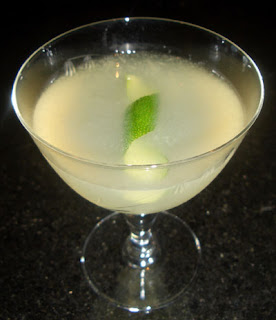



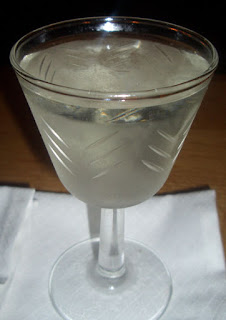
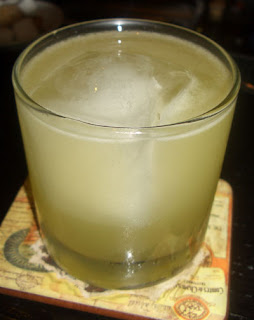
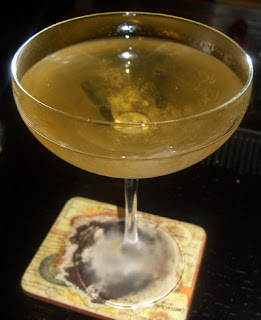

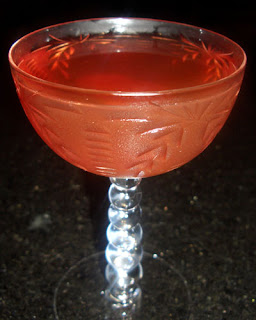

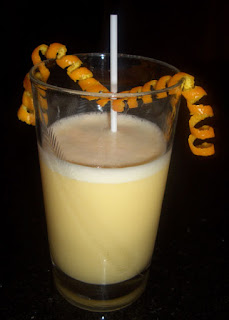



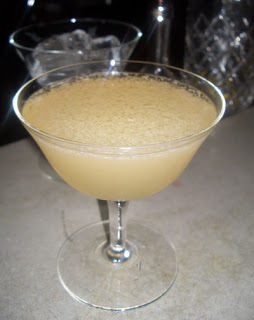

 A. 500 mL Gold Rum (16 2/3 oz Don Q)
A. 500 mL Gold Rum (16 2/3 oz Don Q)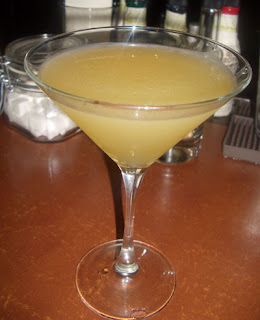


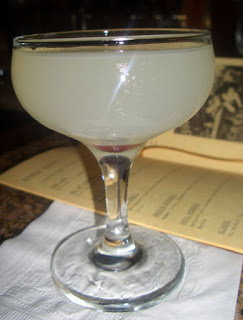
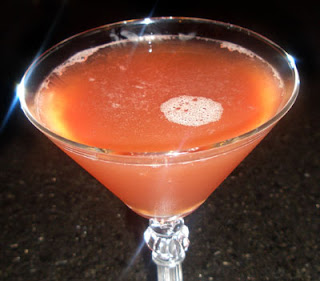
 The 2017 collection of 855 drink recipes, bartender tributes, and essays on hospitality from CocktailVirgin's Frederic Yarm. Available at Barnes and Noble and Amazon.
The 2017 collection of 855 drink recipes, bartender tributes, and essays on hospitality from CocktailVirgin's Frederic Yarm. Available at Barnes and Noble and Amazon. The 2012 collection of 505 drink recipes, techniques, and Boston bar recommendations from Frederic Yarm. Available at Amazon and Barnes and Noble.
The 2012 collection of 505 drink recipes, techniques, and Boston bar recommendations from Frederic Yarm. Available at Amazon and Barnes and Noble.